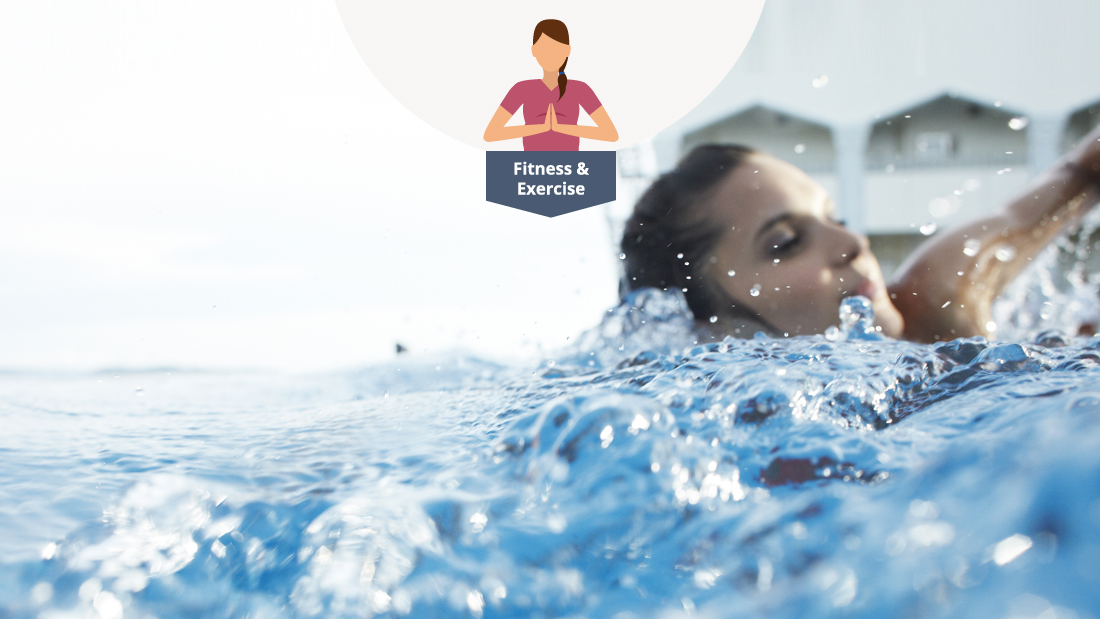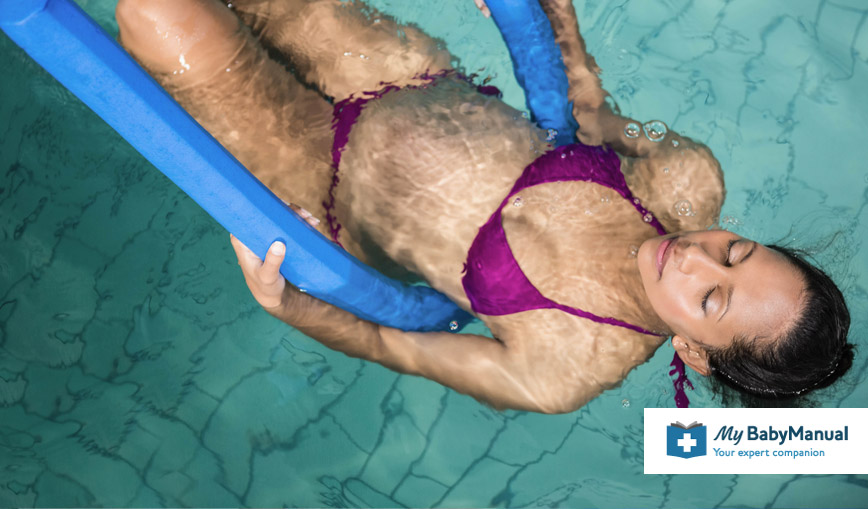
Swimming in pregnancy: Why you should dip more than your toe in the water
Swimming is often highly recommended for pregnant women because it can be carried out at a far gentler pace compared to other forms of aerobic exercise; it exercises all the major muscle groups, and it doesn’t put pressure on your sensitive joints, unlike running or jogging.
Although swimming is generally considered a very safe way for pregnant women to exercise, you should always check with your midwife or doctor before taking up any new activity, especially if have not been particularly active previously. But, for some mums to be, swimming is a really relaxing form of exercise that can help as they move forward into the second trimester and beyond.
If you’re no stranger to your local pool and are already a regular swimmer, then the good news is you probably won’t need to make many adjustments to your existing routine, (unless you’ve been training to go to the next Olympics!) but you still need to discuss your swimming with your midwife or doctor so that they can advise any necessary modifications.
Why swimming could be the best choice for you and your baby
Makes you feel lighter – Part of what makes swimming so safe, and relaxing, for mums-to-be is the buoyancy it gives you. The water supports any extra weight and therefore makes you feel much lighter – bound to be a very welcome feeling.
At week 14 you’re entering your second trimester, and your uterus will start to get much heavier. If you lie on your back, your baby will press against a major vein that returns blood flow from your lower body to your heart. This is why lying on your back for extended periods of time from mid-pregnancy onwards can make you feel dizzy. However, the water’s buoyancy means that you can lie on your back in the pool without feeling any of the discomfort or dizziness that occurs if you were to do the same at home, so you should be able to perform the backstroke with no issue.
Free from germs – Swimming pools are often a safer choice than other bodies of water, such as lakes or the sea, as they are chlorinated. If you go swimming in the sea, then there is the risk of bacteria causing you illness and potentially harming your child. Fortunately, research has found that chlorine and other chemicals used in pools pose no risk to your developing baby.
Cools you down – Pregnancy raises your core body temperature, leading to excess sweating and making it easier for you to overheat. This is especially troublesome in the hot summer months. Going for a swim helps cool you down and keeps you from overheating as easily.
Helps with swelling – Some pregnant women may suffer from a condition known as oedema, which causes swelling in the ankles, feet and fingers due to increased body fluids accumulating in your tissues. Oedema is most likely to be a problem (or a symptom of something serious – so always seek help if you experience discomfort) towards the end of your pregnancy, but some women find they retain water throughout and this can create a lot of discomfort. Luckily swimming can be used to combat Oedema. Submerging your body in water can help increase your circulation, which helps relieve the amount of swelling.
Getting started with swimming
If up until your pregnancy you have not been a regular swimmer, then you should pace yourself, so that you ease into it, increasing the length of time you swim as you go.
As a beginner, you want to aim to complete a 20-30 minute session three or four days a week. But don’t worry if you feel yourself becoming tired out before this, because you can gradually work up to it in time. Alternate between swimming on your front and back to help give your body an effective workout.
The stroke that is most commonly recommended for pregnant women is the breaststroke because it is the least strenuous, but there is no evidence to show that a particular is better or worse for pregnant women. So, find the stokes that are easy for you and you enjoy, and stick with them. Stay in tune with your body; if anything doesn’t feel right, then don’t do it. The same applies to you if you’re a seasoned swimmer, as the intensity of your usual routine may seem too much now that you’re carrying a passenger.
During your session, keep at a comfortable pace. Now’s not the time to focus on pushing yourself. Instead, just try to relax and have fun. If you find yourself breathless – to the point where you would be completely unable to have a conversation with the swimmer next to you – then that is a sure sign that you’re pushing yourself too hard. Slow down or stop for a quick break. For extra support, make use of any swimming aids, such as kickboards and noodles. These can also help you to diversify your strokes.
Your guide to risk-free swimming
Though considered one of the safest methods of exercise for mums-to-be, going for a dip in the pool still comes with its fair share of risks to be wary of. Luckily, these can easily be avoided.
Stay hydrated – While swimming itself is enough to help cool you down, you mustn’t forget that there is still the risk of dehydration if you overexert yourself. Although you may not feel it, you’re still sweating and losing fluids, just as you would with any other form of aerobic exercise. Drink a glass of water before heading to the pool and have a bottle of water handy at the edge of the pool so that you can take frequent sips during your workout.
No Diving! – If you are an intermediate or advanced swimmer and are used to entering the pool by diving, then your pregnancy is the time to stop this. There is too much of a risk to your baby as they cannot handle the sudden change in altitude (the same reason why scuba-diving is off limits). Instead, slowly step or slide into the pool.
Don’t lose your footing – Be extra careful when making your way to and from the pool – wet, slippery surfaces coupled with your shifting centre of gravity may lead to a nasty fall.
Avoid the heat – There is a final word of warning when you go to swimming pools. Many public pools will have saunas, hot tubs, and steam rooms. When you’re pregnant, you should not make use of any of these facilities – they are likely to raise your core temperature and increase the risk of dehydration, which can lead to fainting.
As long as you remain safe, then swimming can be an incredibly enjoyable way of exercising. You may find you love it so much that you want to resume your routine after you give birth, but this time with a little companion (you can take your baby swimming from as young as six weeks old!). Enjoy.



